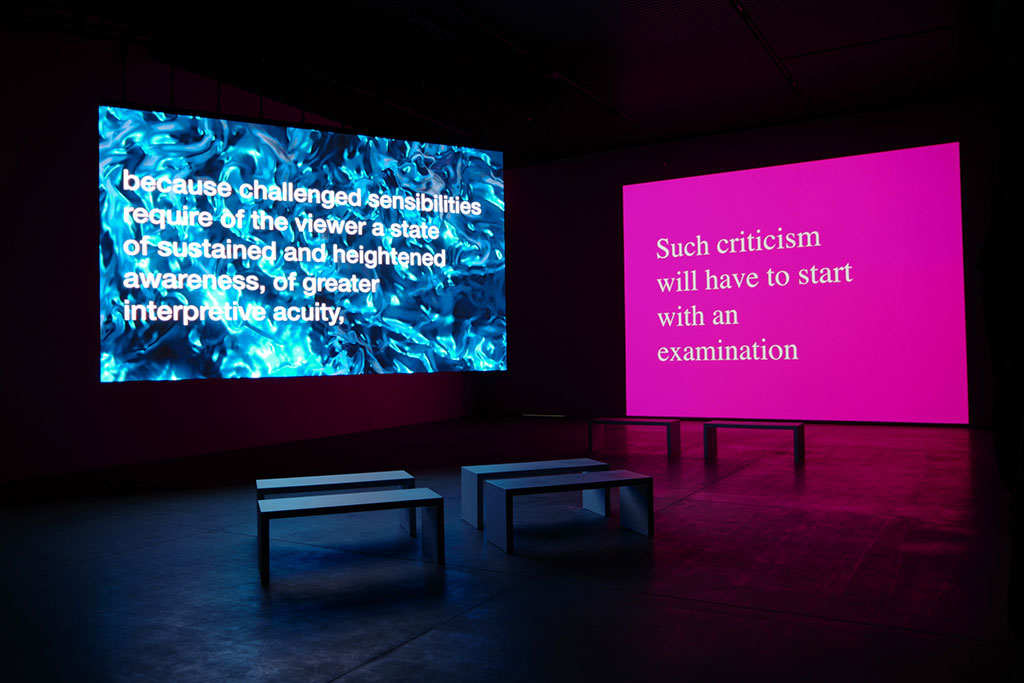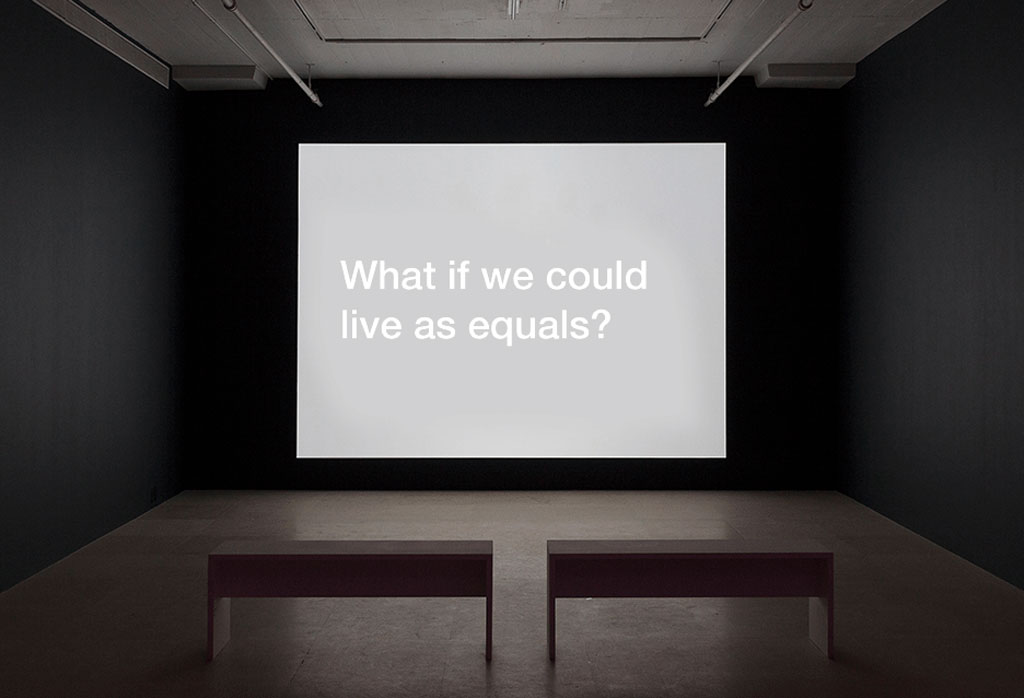ART-PRESENTATION: Tony Cokes-To Live As Equals
 Since the early 1980s Tony Cokes has developed a precise visual and discursive style marked by videos that feature animated text, found images, solid-color slides, and pop music. In his work Cokes samples and subverts modes of representation and cultural fragments from the media—reframing the images and ideas that are designed to construct our habits and identities. By extracting source texts from their original contexts and layering elements that often clash, Cokes analyzes media’s operations and the ways in which they manifest power.
Since the early 1980s Tony Cokes has developed a precise visual and discursive style marked by videos that feature animated text, found images, solid-color slides, and pop music. In his work Cokes samples and subverts modes of representation and cultural fragments from the media—reframing the images and ideas that are designed to construct our habits and identities. By extracting source texts from their original contexts and layering elements that often clash, Cokes analyzes media’s operations and the ways in which they manifest power.
By Efi Michalarou
Photo: BAK Archive
Tony Cokes’ solo exhibition “To Live as Equals” is organized in the framework of the BAK research itinerary “Propositions for Non-Fascist Living” (2017- ), and brings together selected video works from the past 30 years, tracing Cokes’s unique formation of social critique through visual and textual codes, and his changing relationship to archival material over several different global historical moments. The works draw a through line from these historical events to the present of systemic violence and ever-more-complex forms of social control. What are ways of seeing and responding to the seemingly endless cycles of inequality and oppression? How then, the exhibition queries, could one break those cycles and envision living as equals? The title of the exhibition refers to Cokes’s “Evil.27: Selma” (2011), which examines the weight of visible evidence. In a visual deconstruction of animated text floating on one-color slides, the deadpan presentation “Evil.27: Selma” borrows text from the Selma, Alabama collective Our Literal Speed; “The American Civil Rights Movement took hold in a society moving from radio to television.” The slides shift; “social collectivity dependent on imagination” then transition to “everything is instantly visible”, We cannot turn our heads, the spectacles seen on television cannot be unseen. This piece speaks to the media’s power and how they disseminate and articulate images. It resonates deeply today in a “video or it didn’t happen” culture, where even moving images are precarious testimonies to be debated as either fact or fiction. Another work from his mostly imageless “Evil” series (2001- ) includes “Evil.16 (Torture.Musik)” (2009-11), animates excerpts from an article by Moustafa Bayoumi that was originally published in The Nation magazine on December 26, 2005 and examines popular music as a US Army psychological warfare device through the very songs used in torture. Other central works include “FADE TO BLACK” (1990), an assemblage of Black stereotypes from cinema history that contends with the subliminal elements of race relations, and “Black Celebration” (1988), subtitled “A Rebellion against the Commodity”, this engaged reading of the urban black riots of the 1960s references Guy Debord’s Situationist text, “The Decline and Fall of the Spectacle-Commodity Economy,” Internationale Situationniste #10 (March 1966). Along with additional commentary adapted from Barbara Kruger and musicians Morrissey and Skinny Puppy, the text posits rioting as a refusal to participate in the logic of capital and an attempt to de-fetishize the commodity through theft and gift. Cokes asks, “How do people make history under conditions pre-established to dissuade them from intervening in it?”
Info: Curator: Thiago de Paula Souza, BAK-basis voor actuele kunst, Pauwstraat 13a, Utrecht, Duration: 28/2-17/5/20, Days & Hours: Wed-Sun 13:00-19:00, www.bakonline.org

